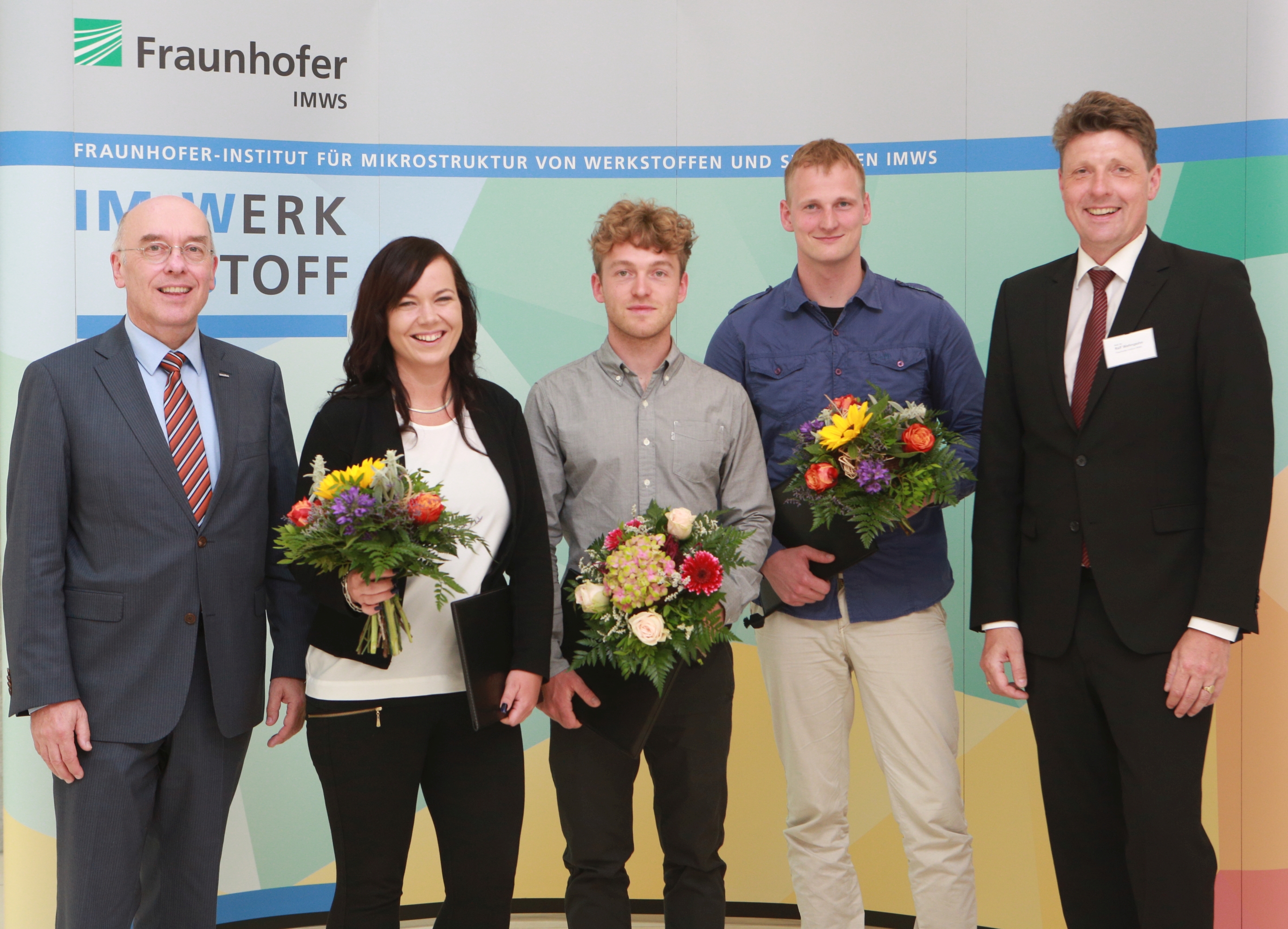Rico Meier Awarded Materials Prize of Schott AG
Rico Meier has been honored with the 2017 Material Prize 2017 for the ultrasonic evaluation of mechanical properties of copper strips for photovoltaic modules in critical areas of the production chain. The 33-year-old physicist received the prize worth € 1,500 in the course of the board of trustees' meeting of the Fraunhofer Institute for Microstructure of Materials and Systems IMWS in Halle (Saale). His investigations allow the destruction-free production of copper bands in the production chain and represent an increase in quality and continuity.

The prize, that was awarded for the second time, could apply all graduates and postgraduate students, as well as to the young scientists of the institute, who were associated with Fraunhofer IMWS. A jury had selected the three finalists among the numerous applicants on the basis of scientific performance, innovation level, professionalism and application relevance. These three presented their results in short presentations to the board of trustees. The members of the Board of Trustees then selected the winner.
Dr. Roland Langfeld, Research Fellow of the Central Research Department of SCHOTT AG and Chairman of the Board of Trustees of Fraunhofer IMWS, presented the prize. »The variety of contributions submitted makes it obvious how important material research is for innovative solutions in industry. I was also impressed by the high scientific level of the work. at Fraunhofer IMWS Rico Meier's research results demonstrate how excellent knowledge of the microstructure level can result in innovative solutions that are not only in demand in industry, but also contribute to greater resource efficiency,« says Langfeld.
Copper bands are used in photovoltaic modules and in power electronics. The manufacturing process considerably influences the properties of the copper material: irregularities such as different drawing and rolling processes or varying annealing conditions cause the material to change. When the copper strip cools after the soldering process, thermomechanical stresses are generated, which can be transferred to the solar cells and thus can permanently damage the photovoltaic modules.
Rico Meier has succeeded in developing characterization methods using acoustic waves (Lamb waves) that monitor the mechanical properties of the copper during the manufacturing process in order to be able to make reliable assessments of its quality. This method is not limited to the characterization of metallic materials, but interesting applications are also found for glasses and ceramics.
When the Lamb waves penetrate the sample body, the mechanical properties of the material become clear through the sound transmission properties down to the microstructural scale. The physicist thus succeeded in determining the elastic properties, the acoustoelastic constant (ie.. the stress-dependence of elastic waves) and the grain size of the copper structure with Lamb waves. This allows to make statements about the annealing condition and the hardening of the copper strip. Furthermore, it is possible to verify the suitability of the material for further processing.
The physicist developed three methods for testing solar cell connectors on an industrial scale. Method one uses a dispersion analysis to determine the modulus of elasticity and the Poisson's number of the material. Method two evaluates the microstructure with the aid of acoustoelasticity and a third method uses the sound scattering of the Lamb waves on the microstructure of the material to determine the grain size. On the whole, these methods make it possible to monitor the mechanical properties of copper in order to ensure a consistently high quality in production and thus to improve the reliability of photovoltaic modules.
»I am pleased that SCHOTT AG is helping us to award outstanding scientific achievements to our young scientists. Fresh ideas and scientific excellence are prerequisites for offering our customers the best possible solutions. For this reason, I would like to thank all members of the Board of Trustees and the Prize Committee and congratulate all three prizewinners, "said Prof. Ralf B. Wehrspohn, Head of Fraunhofer IMWS.
The work of the other two finalists was awarded with 500 euros each. Kay Kölzig investigated the deformation behavior of thermoplastic sandwich composites. Dr. Jessica Klehm was distinguished for the detection of pathological bone changes such as osteoporosis in the microstructure plane.
 Fraunhofer Center for Silicon Photovoltaics CSP
Fraunhofer Center for Silicon Photovoltaics CSP